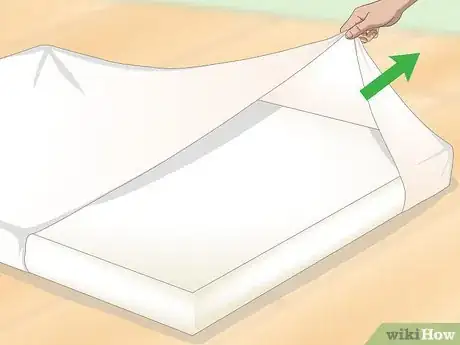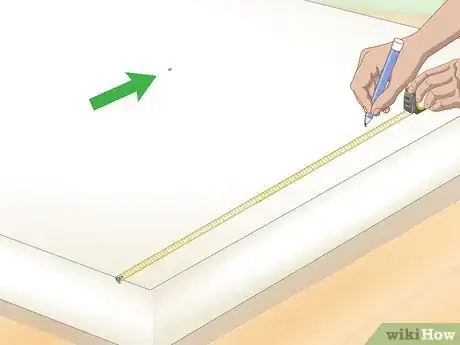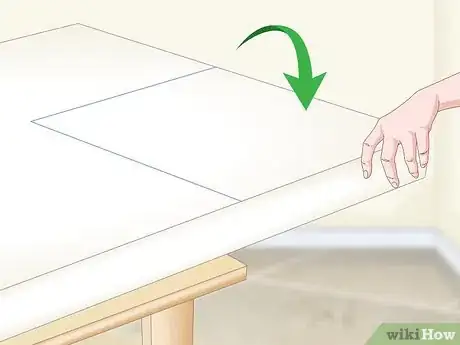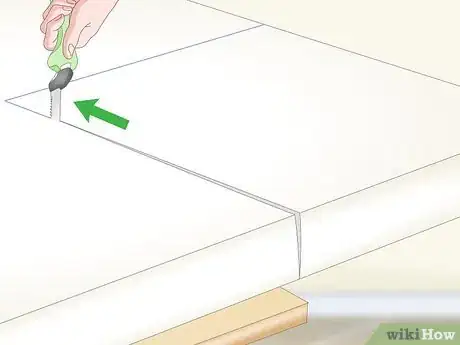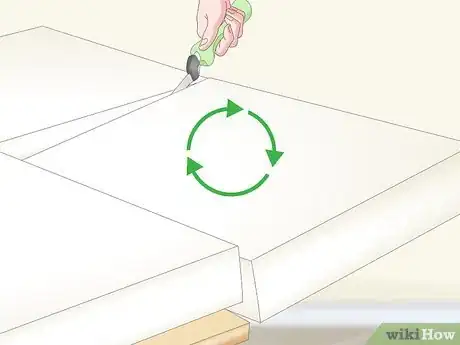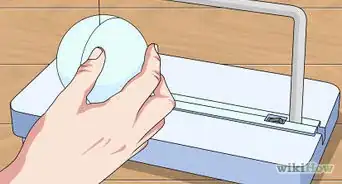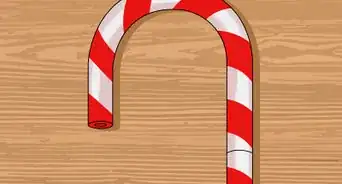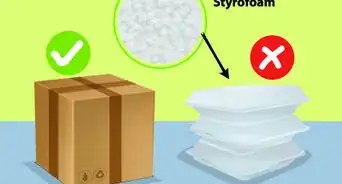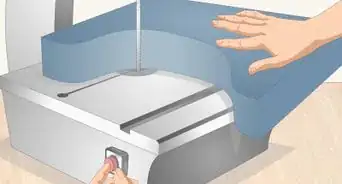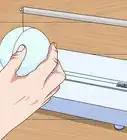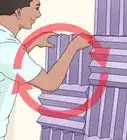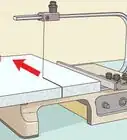This article was co-authored by wikiHow staff writer, Hunter Rising. Hunter Rising is a wikiHow Staff Writer based in Los Angeles. He has more than three years of experience writing for and working with wikiHow. Hunter holds a BFA in Entertainment Design from the University of Wisconsin - Stout and a Minor in English Writing.
This article has been viewed 92,533 times.
Learn more...
Memory foam is a common material used for mattresses and pillows since it’s comfortable and it conforms to your body. If you have a piece of memory foam that’s too large, you can easily cut it at home with an electric carving knife. Be sure to double check your measurements before you make your cut so you don’t make a mistake. When you’re finished, you’ll have a piece of memory foam that’s the perfect size!
Steps
Measuring and Marking the Foam
-
1Remove the slipcover if you’re cutting a memory foam mattress. Many new memory foam mattresses have a slipcover on top for an additional layer of protection. Look for a zipper around the edge of the mattress and unzip it as far as you can. Once the zipper is undone, pull the edges of the slipcover off of the mattress and remove it. Since you’re cutting mattress, you can either throw away the slipcover or use the material to make a new slipcover.[1]
- If there isn’t a zipper around the edge of the slipcover, then you may need to cut it off with a knife or pair of scissors.
-
2Check the dimensions you need and add 1⁄8 in (0.32 cm) to them. Use a tape measure to double check the height, width, and depth for the foam you need for your project. For example, you may measure a mattress if you’re cutting a memory foam topper, or you may find the dimensions of a pillowcase if you’re making a pillow. Add 1⁄8 inch (0.32 cm) to each measurement you take since cutting the foam could remove some of the material.[2]Advertisement
-
3Mark the memory foam with a permanent marker and a tape measure. Hold the end of your tape measure at the edge of your piece of memory foam and pull it out until you reach the correct length. Draw a dot on the memory foam with a permanent marker at the end of your measurement. Move your tape measure along the edge of the mattress by 10 inches (25 cm) and make another dot so it’s in line with the first one. Continue marking the memory foam until you reach the other side. Repeat the process for any other dimensions you plan on cutting.[3]
- Double check your measurements to make sure they’re accurate, or else you may make a crooked cut.
Warning: Be careful not to compress the memory foam while you’re taking your measurements, or else they may not be accurate.
-
4Draw your cut lines on the foam with a marker. Set a straightedge on top of the memory foam so it crosses the marks you made for your measurements. Use a permanent marker to draw your lines between the measurements so you know where to make your cuts. Make the lines thin so your cuts and measurements are precise.[4]
- If you’re drawing a curved line, use a round object as a stencil, such as a coffee can or a bowl.
Making Your Cuts
-
1Set the foam on a table so the side you’re cutting hangs over the edge. Find a flat, sturdy table to set your memory foam on. Position the memory foam on the table so your cut lines overhang the edge of the table. That way, you won’t damage the tabletop when you cut through the foam.[5]
- Set a heavy object on a piece of memory foam to help hold it in place if it tips over the edge. Make sure the object is at least 4–5 inches (10–13 cm) from your cut line so the foam doesn’t compress.
-
2Hold an electric carving knife perpendicular to the memory foam. Plug in your electric carving knife and hold it with your dominant hand. Position the knife so the blade is at a 90-degree angle to the edge you’re cutting to make a smooth, straight cut. Make sure the serrated edge is touching the memory foam and lines up with the line you drew.
- You can buy an electric carving knife from any kitchen supply store or online.
- An electric knife will give you the smoothest cut, but you can also use a serrated bread knife if you don’t have an electric one.
-
3Guide the knife along the line you drew on the foam. Turn on your electric carving knife and slowly follow along the marker line. Keep your knife perpendicular to the foam so your cut isn’t crooked. Avoid pushing down on the foam while you’re cutting since it could deform and make your cut inaccurate. Continue pushing the blade through the foam along the line until you cut through its entire length. When you need to pull the knife blade out of the foam, turn it off before removing it.[6]
- Keep your fingers and the knife cord away from the blade while it’s running so you don’t hurt yourself.
- If you’re using a serrated bread knife, saw back and forth to make your cuts.
Tip: Lay a straightedge along the line to use as a guide while you’re cutting if you need help keeping the knife straight.
-
4Cut along the line again if the blade didn’t go through the foam. If you’re cutting through a thick piece of memory foam, your knife blade may not cut through it completely. Put the carving knife blade at the end of the cut again and follow along the line again. Work slowly so your cut stays straight and accurate. Continue doing multiple passes over the cut until the blade goes completely through the foam. Repeat the process for any other dimensions you need to cut from the memory foam.
- You can also flip the piece of foam over to the other side and take your measurements again. Cut through the memory foam so your 2 cuts meet in the middle.
Warnings
- Keep your fingers and the knife cord away from the blade while it’s turned on.⧼thumbs_response⧽
Things You’ll Need
- Tape measure
- Marker
- Straightedge
- Table
- Electric carving knife
